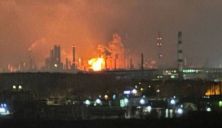On January 10, the U.S. Treasury Department sanctioned 161 oil tankers for transporting Russian oil. These measures, imposed by the outgoing Biden administration, remain in place under President Donald Trump, who may introduce even tougher restrictions before peace talks on Ukraine begin.
Since then, the cost of securing a tanker to transport Russia’s Urals crude to Asia has jumped nearly 50%, according to Argus Media. The price gap between when a barrel leaves Russia and when it arrives in Asia—often used as a proxy for shipping costs—has also widened.
While past fluctuations raised suspicions of artificially inflated freight rates to circumvent the G7 price cap, the sheer number of sanctioned vessels now signals a real increase in costs. Many of the newly blacklisted tankers appear to be exiting the market, forcing Russia to seek alternative shipping solutions.
Currently, 265 tankers are sanctioned by the U.S., EU, or UK, with Washington’s measures having the most severe impact. Of the 435 vessels that transported Russian oil in 2024, 112—about 26%—are now under U.S. sanctions, rising to 37% when including UK and EU restrictions.
These sanctions are leaving a significant gap in Russia’s “shadow fleet,” increasing freight costs and making it harder to acquire new vessels. As a result, Russia may have to pay higher prices for shipping and offer greater incentives to operators willing to take the risk of future sanctions.
Read also: Ukraine not in talks with EU on extending Russian gas transit – Stefanishyna













